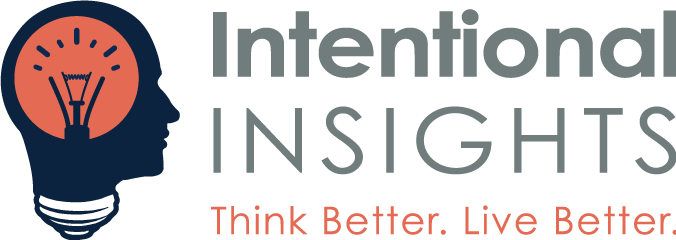
Imagine a world where your voice carries the same weight, whether you’re in a sleek, glass-walled conference room or cozied up in your home office. This isn’t a far-off dream; it’s the imperative evolution of hybrid meetings.
Bridging the Gap in Hybrid Meetings
Frank Weishaupt, CEO of Owl Labs, told me in an interview about his crusade for inclusivity in the evolving landscape of hybrid meetings. Reflecting on the seismic shift in work dynamics during 2020, he recalls, “When the world transitioned overnight to remote work, many found themselves inadvertently marginalized in digital meetings.” This, according to Weishaupt, marked a critical juncture in rethinking meeting structures.
Owl Labs, under Weishaupt’s leadership, is not just responding to these challenges but is actively reshaping the narrative. “Our goal is to dismantle the ‘out of sight, out of mind’ mindset that pervades many hybrid meetings,” Weishaupt explains. To this end, Owl Labs has developed a suite of innovative hardware solutions designed to ensure remote participants are not just present but are pivotal to the meeting’s discourse.
These solutions pivot away from the traditional “bowling alley” setup of conference rooms, where remote participants are often just passive faces on a screen at the end of the room. Instead, Owl Labs’ technology fosters a more democratic and interactive environment. “We’re facilitating a shift from merely watching a meeting to being an active, engaged part of it, regardless of your physical location,” says Weishaupt. This transformation is achieved through state-of-the-art cameras and sound equipment that not only capture the essence of in-room interactions but also elevate the presence of remote participants, making them feel as if they are sitting at the table with their in-office colleagues.
Technology Meets Empathy: The Key to Effective Hybrid Meetings
Technology, while pivotal, is merely one piece of the puzzle in achieving truly effective hybrid meetings. Frank Weishaupt, CEO of Owl Labs, emphasizes that the real power lies in the intersection of technology and empathy. “The tools we create are conduits, not just for communication, but for understanding and empathy. It’s about ensuring that the person on the other side of the screen feels heard, seen, and valued,” he elucidates.
Weishaupt’s philosophy is that technology should be a bridge, not a barrier. In this light, cultivating a culture of inclusion goes beyond merely equipping meeting spaces with high-tech gadgets. It’s about reshaping attitudes and approaches toward remote collaboration. “When we interact with remote participants through these digital interfaces, we must infuse our use of technology with the same level of consideration and attentiveness we would show if they were physically present in the room,” Weishaupt advises.
This cultural shift requires a holistic approach to how meetings are conducted. It involves training and guidelines that encourage active listening, equitable turn-taking, and a conscious effort to integrate remote contributions seamlessly into the conversation. “It’s about changing our meeting norms,” Weishaupt adds, “such as inviting remote participants to speak first, or having a dedicated person in the room responsible for ensuring remote voices are not only heard but also integrated into the decision-making process.”
Moreover, this paradigm shift extends to the realm of non-verbal communication. Weishaupt notes the importance of being cognizant of body language, tone, and other subtle cues that can often be lost in virtual settings. “Empathy in this context means being more deliberate in our communication, ensuring our remote colleagues are not just part of the conversation in theory but are actively engaged and feel a genuine sense of belonging,” he explains.
The Resistance to Change: A Leadership Challenge
A significant challenge in adopting these technologies comes from the top. “Leadership, comfortable with traditional office interactions, often resist adopting new technologies for remote work,” Weishaupt observes. This hesitation is not just a matter of technological inertia but is deeply rooted in a pre-digital comfort zone that many leaders have long inhabited.
This challenge is not insignificant. Leaders who have built their careers and management styles in a face-to-face office environment may find it daunting to navigate the nuances of a digital workspace. Weishaupt elaborates, “There’s a whole repertoire of non-verbal cues and spontaneous interactions that leaders rely on in a physical office setting. The shift to hybrid models can feel like a loss of control and connection for them.”
However, as the landscape of work undergoes a seismic shift, the role of leadership must evolve accordingly. “Adaptability is key,” Weishaupt urges. “Leaders must transcend their familiar paradigms and explore the potential of digital tools not just as a necessity, but as a strategic advantage.” This evolution involves embracing tools and practices that facilitate remote work, but more importantly, it requires a mindset shift.
Leaders need to recognize that flexibility and inclusivity are not just buzzwords, but essential pillars of the modern workplace. Weishaupt suggests that leaders should start viewing remote work not as a challenge to overcome, but as an opportunity to harness a more diverse, dynamic, and adaptable workforce. “Inclusivity in this digital age means making every team member feel equally valued and heard, regardless of their physical location,” he emphasizes.
Moreover, leaders must lead by example in embracing this new normal. “It’s about demonstrating a commitment to learning and using digital tools, showing empathy towards remote employees’ challenges, and actively fostering a culture where every voice, irrespective of how it’s transmitted, is heard and respected,” says Weishaupt.
Overcoming Resistance
In my consulting practice, I often encounter the resistance to change in hybrid work environments that Weishaupt identifies. This resistance, and associated biased thinking, presents a serious barrier to implementing effective hybrid work models.
The reluctance among leaders I encounter is not solely about unfamiliarity with technology, but more profoundly about a reluctance to change established workflows and communication patterns. Weishaupt accurately points out that leaders who are accustomed to face-to-face interactions often find the transition to hybrid models disconcerting. My approach in assisting companies transition to these models involves bridging the gap between traditional leadership styles and the demands of a modern, digital-first workplace. This includes conducting leadership workshops and training to demystify hybrid work models, emphasizing empathy in leadership to understand the challenges of remote employees, and showcasing success stories from other organizations that have effectively embraced hybrid models. These strategies help alleviate apprehension and demonstrate the tangible benefits of flexibility and inclusivity.
Furthermore, an iterative approach to implementing hybrid work models allows for a gradual adaptation, making the transition smoother for both leaders and employees. Establishing robust feedback mechanisms is also crucial for continually refining the hybrid model based on regular check-ins and surveys. This comprehensive strategy aims not just to adopt hybrid work models but to ensure companies thrive in them, creating a balanced blend of traditional and innovative practices where every employee feels valued and integrated, regardless of their physical work location.
Conclusion
Treating remote participants as equals in hybrid meetings is not just a technological issue but a cultural one. As businesses evolve, the successful ones will be those that embrace flexibility, inclusivity, and the technology that supports them. As Weishaupt aptly puts it, “We’re in a new era of work, and it’s time for our meeting cultures to reflect that.”
Key Take-Away
Successful hybrid meetings go beyond technology; they require a culture of inclusivity and empathy. Leaders must ensure remote participants are actively engaged and valued, fostering collaboration and adaptability in the modern workplace…>Click to tweet
Image credit: Andrea Piacquadio/pexels
Originally published in Disaster Avoidance Experts




